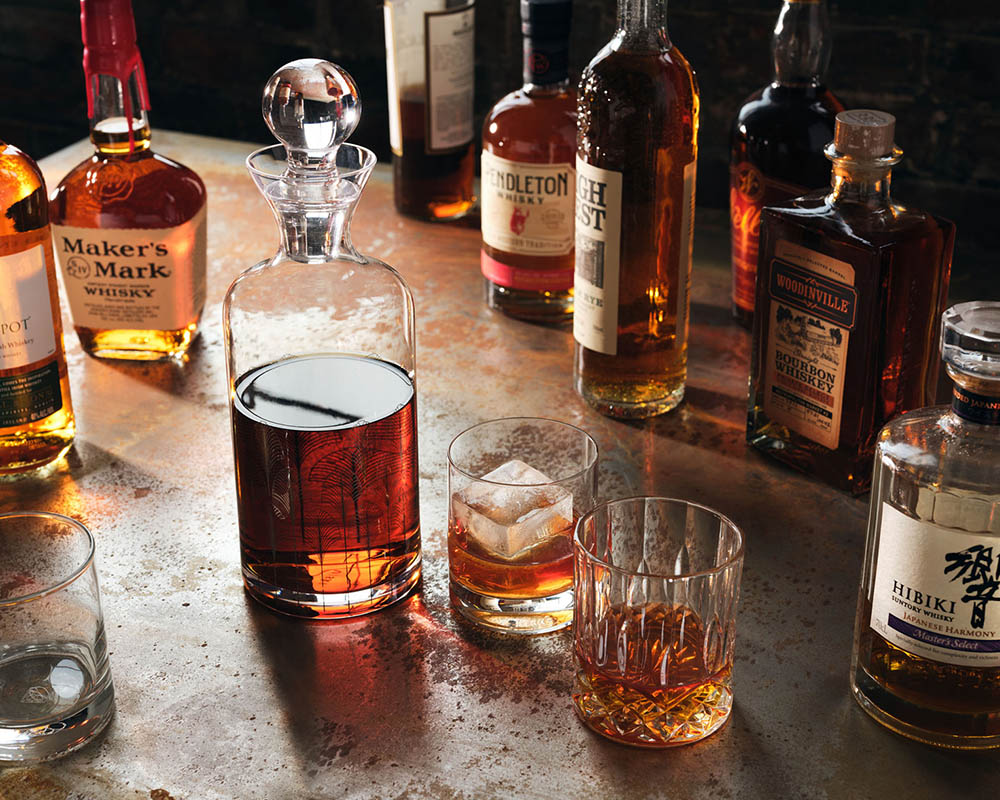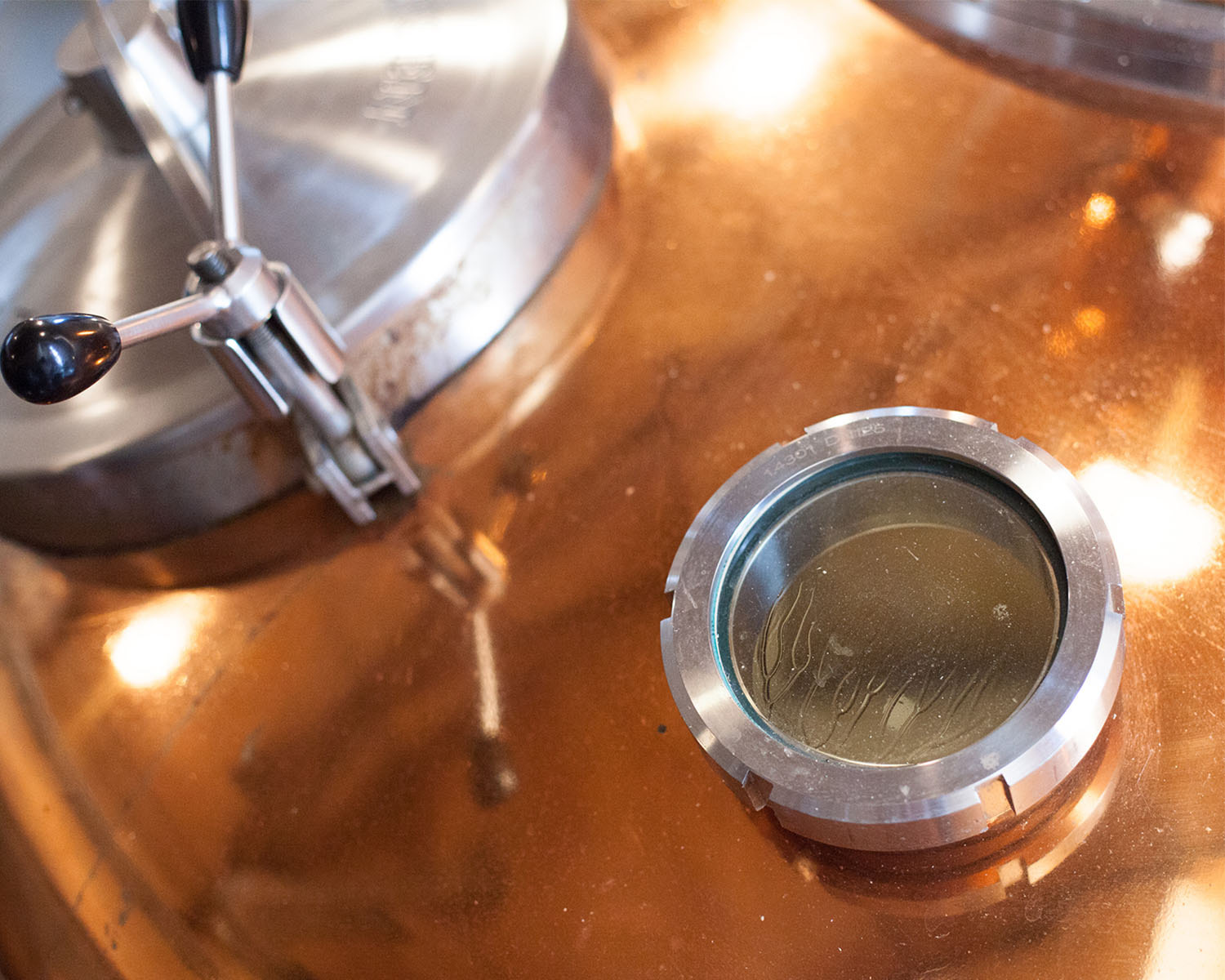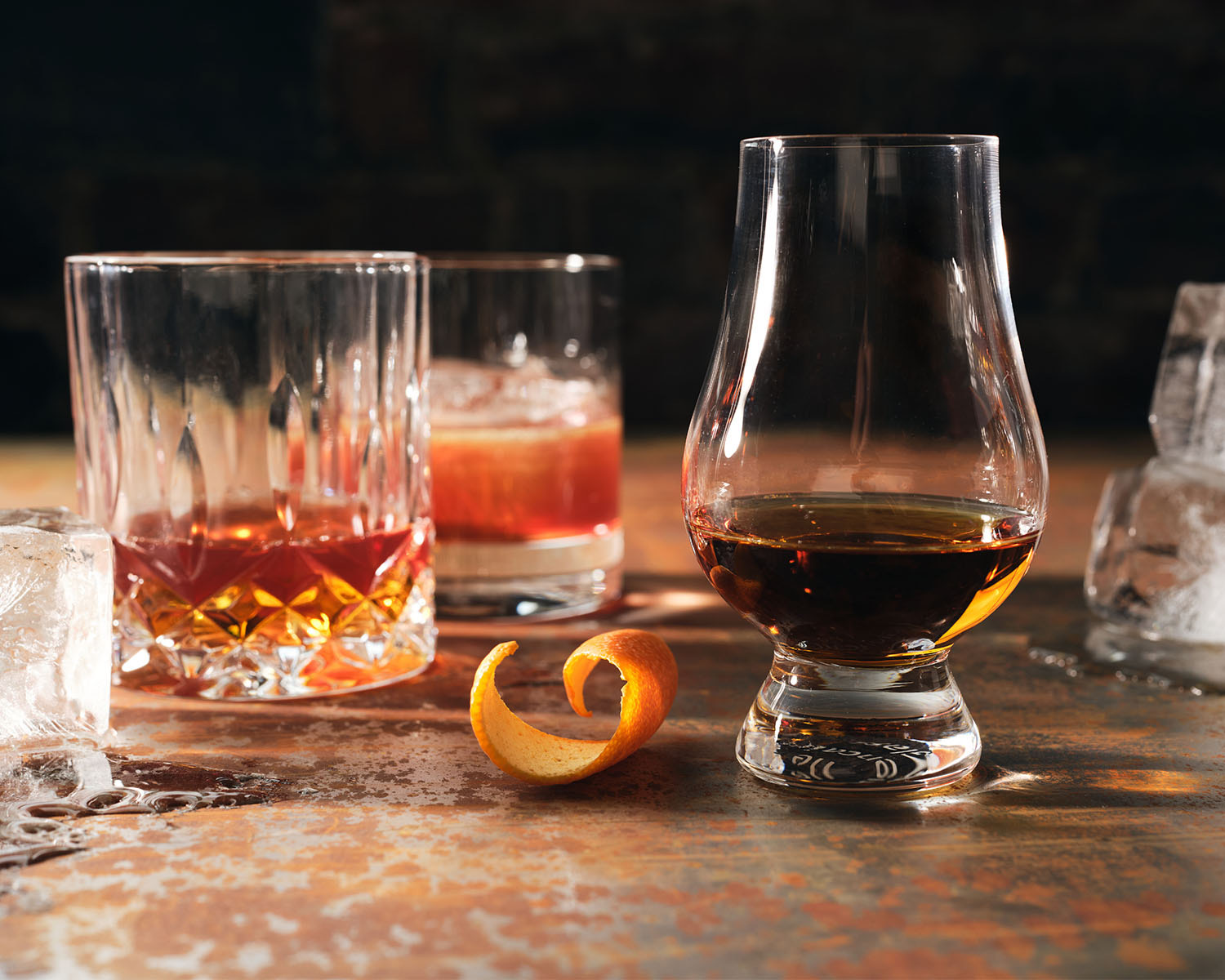
With so many producers out there, it can be daunting to jump into the world of whiskey. I am someone who has been drinking and collecting all types of whiskies for years now, so I have partnered with Metropolitan Market to share Whiskey 101 in the hopes of bringing some of the basics to light and to help anyone out there who wants to become confident in their knowledge of this delicious spirit.
 Photo Credit: Garrett Hanson/Woodinville WhiskeyHow it’s made
Photo Credit: Garrett Hanson/Woodinville WhiskeyHow it’s made
 Photo Credit: Garrett Hanson/Woodinville WhiskeyHow it’s made
Photo Credit: Garrett Hanson/Woodinville WhiskeyHow it’s madeLet’s start with how whiskey is made. Generally, whiskey is distilled in either a copper pot still, as with most Scotch and malt whiskies, or a column still, as with bourbon and other American whiskeys. Either way, whiskey can be made from malt (mostly malted barley) or grains (with corn, rye, and wheat being the most popular). Once a particular mash, or recipe, is distilled, almost all whiskey will be aged in a wooden cask.
We will talk cask types and their effect on the end product, but I want to first point out that older whiskey does not always mean better whiskey. In the distilling community, many arguments have been made over the years as to the “perfect” amount of time for a whiskey to rest in a cask, but there is no gold standard. The proper length of time can depend on the location of the aging, the mash that was used, annual changes in weather, and all sorts of other factors. This is why distilleries rely so heavily on an expert Master Distiller who not only puts a good base product in the cask off the still, but also has the palate and experience to know when the time is right to bottle that brand’s particular release. This is probably the single biggest difference from brand to brand.
During its aging time in the cask, whiskey will undergo six distinct processes: extraction, evaporation, oxidation, concentration, filtration, and coloration. We could spend hours diving into each of these, but from a high-level perspective, extraction is probably the one of most interest as it is the process by which whiskey seeps in and out of the wooden cask. This process imparts chemical compounds and acids such as vanillin into the whiskey, imbuing it with new flavors and contributing heavily to the taste of the finished product. Distillers often use casks that have previously aged other spirits to further enhance the flavor of the whiskey.
 Photo Credit: Garrett Hanson/Woodinville WhiskeyRules & Regulations
Photo Credit: Garrett Hanson/Woodinville WhiskeyRules & Regulations
Although whiskey, especially American whiskey, has its roots in adventurous home distilling, there are many rules and regulations in the whiskey world, mostly determined by where that product is made. In many cases, these rules must be met to even call a particular product whiskey. Here are few varieties of the varieties.
American Whiskey
American whiskey production is tightly regulated by the U.S. Federal Government. Directly from "Standards of Identity for Distilled Spirits, Title 27 Code of Federal Regulations, Pt. 5.22," here are a few of the basic rules for each type:
- Rye whiskey: made from mash that consists of at least 51% rye
- Wheat whiskey: made from mash that consists of at least 51% wheat
- Bourbon whiskey: made from mash that consists of at least 51% corn (maize) and aged in new charred oak barrels
- Corn whiskey: made from mash that consists of at least 80% corn and is not aged or, if aged, is aged in uncharred or used barrels
American whiskeys must be aged in new charred oak containers, except for corn whiskey, which does not have to be aged. A common myth is that American bourbon must be made in Kentucky, and although, indeed, most of it is, there is no rule regarding a particular state except in the case of Tennessee Whiskey. It can definitely be confusing, but the main sticking point here is the new charred oak.
Scotch Whisky
Whisky made in Scotland is known as Scotch whisky or simply, as "Scotch." Anything that has the label “Scotch” on it must be distilled in Scotland and matured for a minimum of three years in oak casks. If there is an age statement on the bottle, that age must be of the youngest Scotch whisky used to produce that whisky, but Scotch whisky without an age statement may, by law, be as young as three years old.
- The basic types of Scotch are malt and grain, which are combined to create blends
- Five main regions: Highland, Lowland, Islay, Speyside, and Campbeltown–each with their own flavor profiles and styles
- Primarily aged in used oak barrels from all over the world
Irish Whisky
Once the most popular spirit in the world, Irish whisky experienced a major decline in the 1900s. However, there has been a huge boom since 1990. Irish Whisky is normally distilled three times, traditionally using pot stills, although the column still has become more popular, producing grain whiskey for blends.
- By law, it must be produced in Ireland, aged in wooden casks for no less than three years
- Unpeated malt is almost always used
- Types: single malt, single grain, blended whiskey, and single pot still whiskey
Japanese Whiskey
Once only made for the domestic Japanese market, they are now some of the most sought-after whiskies in the world. They produce both single malt and blended whiskies from a base mash of malted barley, using a pot still, and most times, with very little peat. Generally lighter tasting and incredibly well-balanced, Japanese whiskies are often considered some of the best.
Canadian Whisky
Made popular in the United States during American Prohibition, Canadian whiskies must be produced and aged in Canada, be distilled from a fermented mash of cereal grain, be aged in wood barrels with a capacity limit of 700 liters for not less than three years, and "possess the aroma, taste, and character generally attributed to Canadian whisky." Canadian whiskies mostly produce rye whiskies, but they can be made from any grain and are often a blend of grains. They may also contain caramel and flavoring in addition to the distilled mash spirits. As there is no limit on the alcohol level in distillation, there are often very high proof single barrels available.
 Photo Credit: Garrett Hanson/Woodinville WhiskeyWhiskey Barrels
Photo Credit: Garrett Hanson/Woodinville WhiskeyWhiskey Barrels
Most whiskey is aged in wooden barrels. The U.S. requires that "straight whiskey" (except for corn whiskey) must be stored for at least two years in new charred oak containers. In many other regions, whiskey is aged in used American whiskey barrels, often over and over. The “standard” size for these American Whiskey barrels is 53 U.S. gallons (200 l; 44 imp gal). Barrel Finishing is when whiskey is transferred into different barrels that house other spirits, imparting new flavors or other qualities into the whiskey. Scotch has long been using Sherry finishes, for example. This practice has exploded in the U.S. in recent years, especially with smaller, independent distillers. These secondary barrels can be small or incredibly large. Some distilleries use smaller barrels to increase the amount of wood contact in a shorter period of time. Although this does not “speed up” the aging process, it often allows smaller distilleries to produce a younger whiskey with more pronounced wood flavor characteristics.
 Photo Credit: Garrett Hanson/Woodinville WhiskeyHow to Drink Whiskey
Photo Credit: Garrett Hanson/Woodinville WhiskeyHow to Drink Whiskey
First–there is no “right” way to drink whiskey, but there are surely proper ways! Although you don’t need a special glass to enjoy a good dram, there are, indeed, glasses purposely made for sipping whiskey. The Glencairn whiskey glass, with its tulip shaped bowl, concentrates the aroma of your whisky in a way that a standard ricks glass cannot. This often can help you taste specific characteristics in a particular whiskey and can lead to a better tasting experience—but a regular glass will often work just fine. I would suggest giving any pour a few minutes to breathe. A touch of water, and I mean a few drops, can often open new flavors in a whiskey, especially in high proof whiskey. When serving whiskey tastings to friends, I often suggest trying the whisky out of the bottle first, then adding a few drops of water about halfway through to explore these changes. While I prefer my whiskey “neat” (without ice), some people prefer their whiskey “on the rocks” (adding a few cubes of ice). I would suggest, if possible, to use a single large cube or sphere to prevent over-dilution of the spirit. If whiskey with a lot of melted ice is your thing, then have at it—but also think about having a highball (which is another write-up all together)!
Honestly, drink what you like, and like what you drink. Whiskey is meant to be enjoyed, and if you are doing that, you will be just fine.
